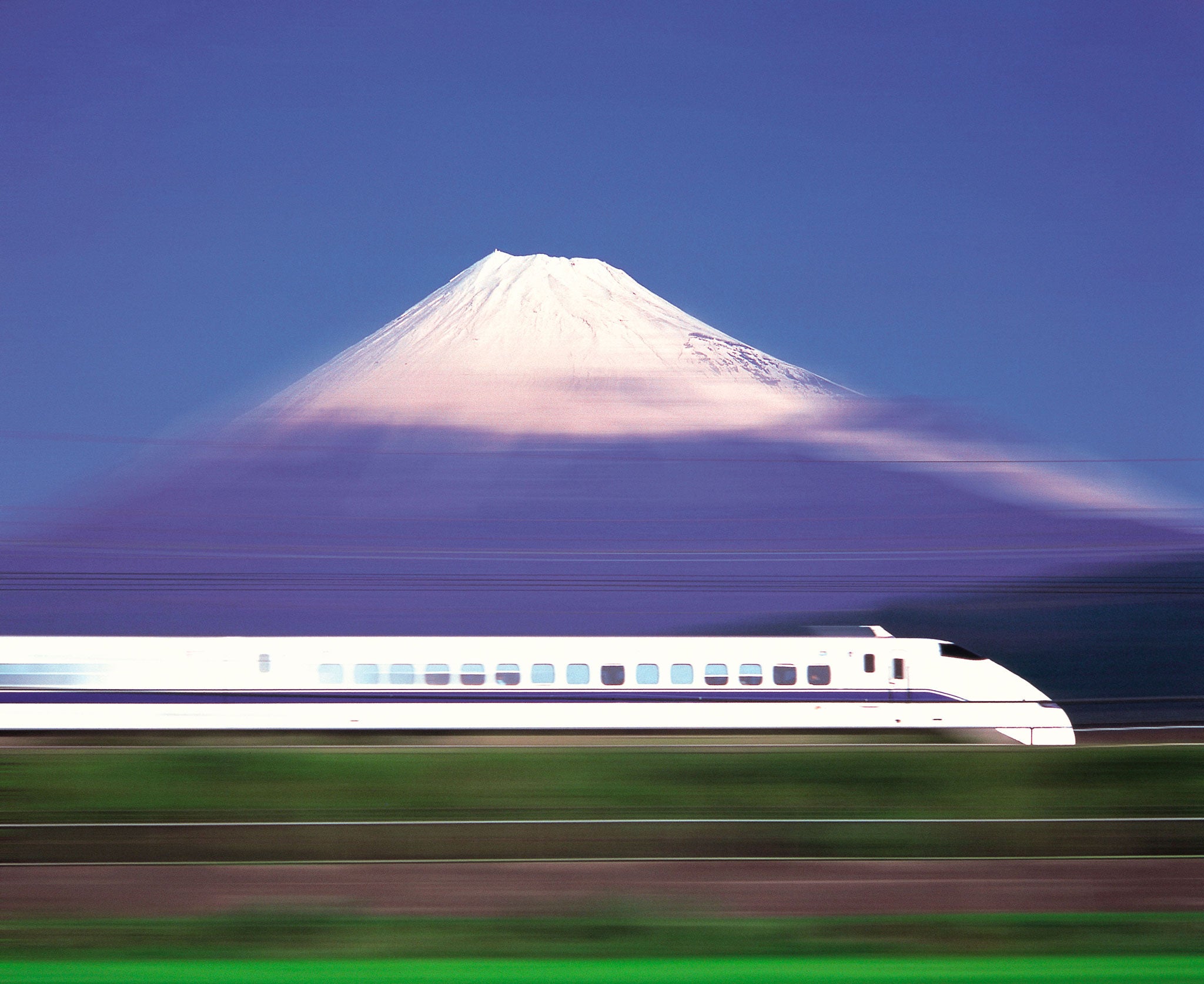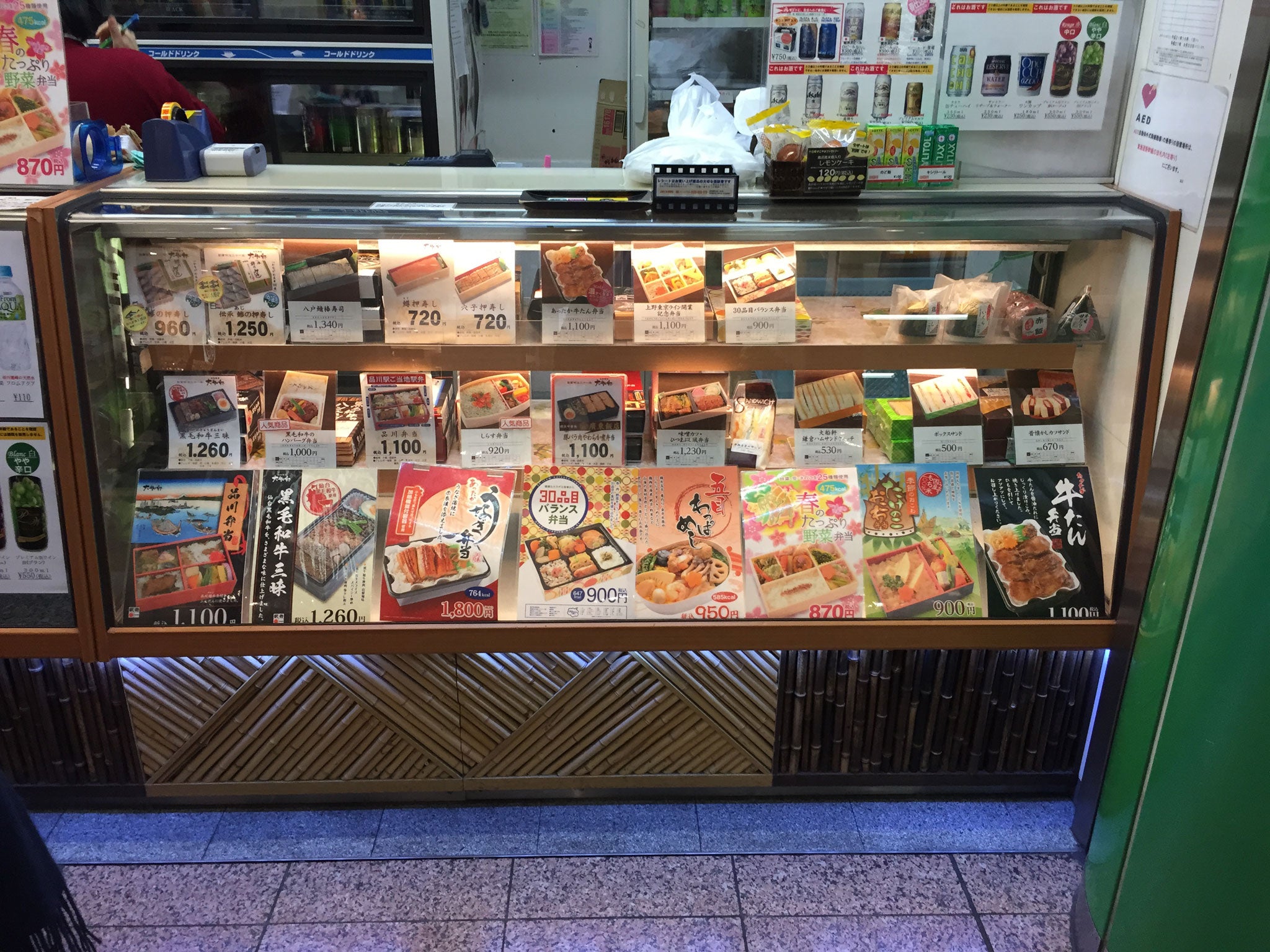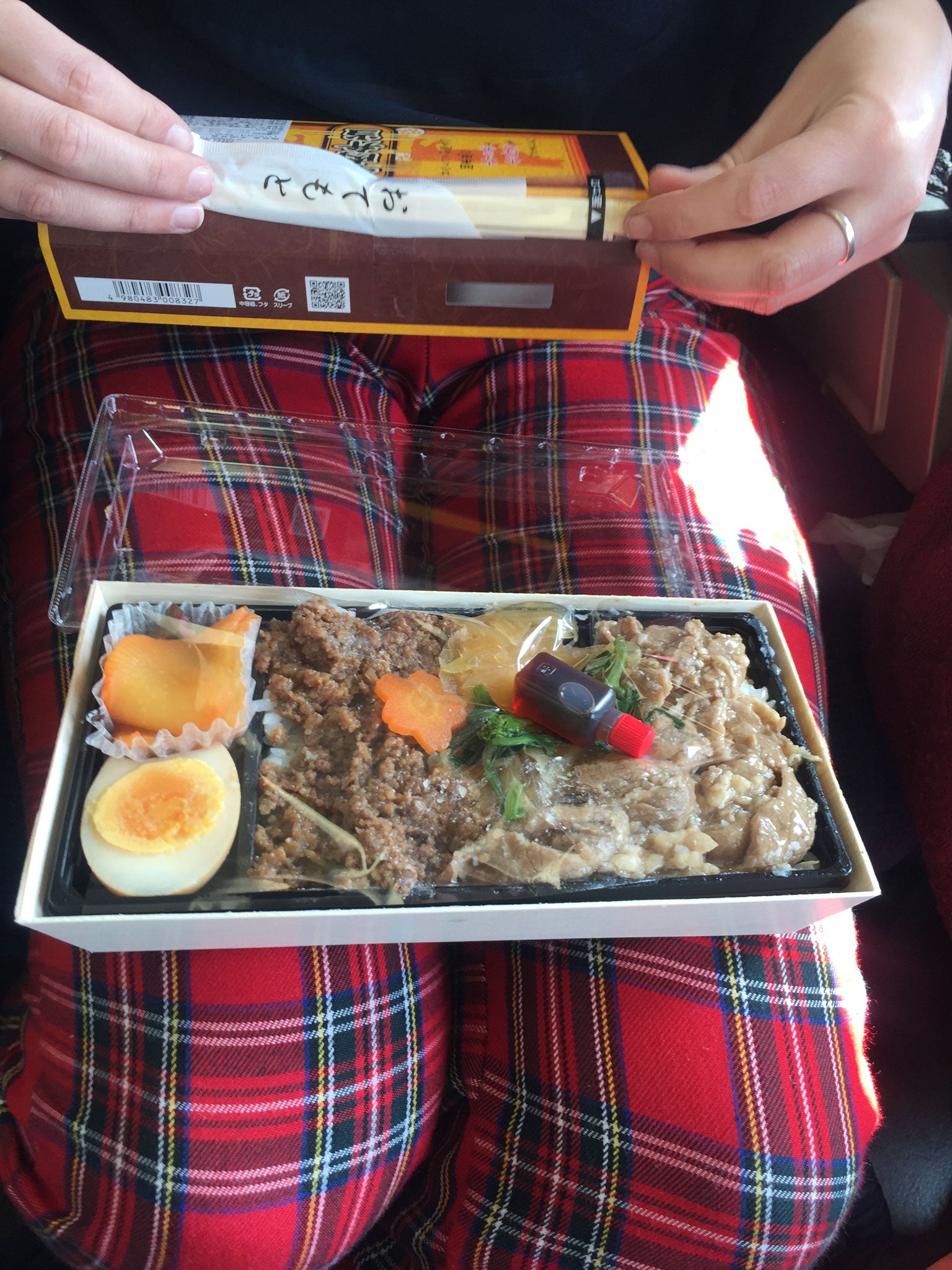Joy of bullet-train bento: the world's finest packed lunches
Ekiben form part of a rich global tradition of good nosh helping to pass the time on a train journey. Oscar Quine tucks in

It's just before 9am and, as usual, Tokyo Shinagawa train station teems. A tide of people swills around corners and cascades down staircases. In the centre of it all – an island of calm – stands a neon-lit food stand. On its shelves, rows of bento boxes are laid out like gifts under a Christmas tree, each wrapped precisely in paper and cellophane that glints in the light.
These are ekiben – bento boxes crafted specifically for travellers on the country's Shinkansen bullet trains. They form part of a rich global tradition – from Amtrak's dining cars to chai-wallahs serving piping-hot tea and local curries on India's trains – of good nosh helping to pass the time on a train journey. A tradition from which the UK, with its soggy on-board BLTs, has been all but left out.
It is spring and we're heading south, against the sakura tide – cherry blossom that spreads in a wave up the country as the temperature rises. Almost every decent-sized station in Japan offers an eponymous ekiben that showcases local produce. Travellers have been known to go far out of their way to pick up a particularly well-regarded box. On-board, we unwrap our Shinagawa ekiben gingerly, as if lifting the lid on mum's best jewellery box.
The interior is divided particularly. My OCD inner child – the one who dislikes the items on his plate touching – is satisfied. The order makes for a meal as pleasing to look at as to eat: a kitsch watercolour of canary-yellow egg tucked next to rose-pink kamaboko surimi, bright-green beans and fuchsia pickled ginger.
"That's part of how the Japanese eat," explains Hannah Tokumine, Managing Director of London's Japan Centre. "They take it in with their eyes first. It's part of the whole experience."
Eaten aboard the Shinkansen S700 – as patchwork countryside whistles past at 200mph – it strikes me that ekiben may in fact be the fastest food on Earth.
We arrive in Hakone 90 minutes later, well-fed. The town, in the shadow of Mount Fuji, is famed for hot springs in which eggs are traditionally boiled. We eat yolk-yellow ice-cream, a black-shelled sulphurous variety and, after a night's sleep in a ryokan, a full traditional breakfast. But still, as we leave – and Fuji's icing-sugar peak glides by – hunger sets in.

Fortunately, the world's most decadent packed lunch awaits in Kyoto. Tagoto, a nearby high-end restaurant famed for its kaiseki – a traditional multi-course dinner – makes a handful of ekiben to be sold at the train station every day. It's an advert for the best of local land and sea, bursting with pickled mackerel, prawns and a yuba tojiba tofu parcel packed with vegetables, fried and then stewed. Pick one up for about 3,500 yen – around £19. (By contrast, the Shinagawa box cost around £6.)
In a country where workers take very little time off, ekiben perform a wider democratic function. "They're a window to the local area," says Tokumine. "The Japanese do sightseeing very, very quickly. Ekiben is a way to get a glimpse of where they're travelling to without having to spend an hour or two in a restaurant that's going to eat into their time."
As with the Tokyo box, the upscale offering contains no meat (Japanese cuisine is still marked by the country's Buddhist heritage) and puts a strong emphasis on fresh, local ingredients. So it is that somewhere between Okayama and Nara a day later, when a food trolley trundles up the aisle, it is not beer and peanuts that is being offered but a Koraku-en bento – named after one of the Three Great Gardens of Japan which falls within the local prefecture.

The vegetables are usually cooked in dashi for extra punch. It was from this stock made of kelp, dried fish or shiitake mushrooms that umami, the 'fifth flavour' central to Japanese cooking, was first identified. While other cuisines turn to the kick of spice or to herbs for character, Japanese food draws on its earthy, low notes.
Showing the care and attention to seasonality in each box, a single sakura sits alongside a bamboo shoot – a celebrated springtime delicacy. The flower is cut from gelatinous devil's tongue. For the adventurous, an ekiben makes for a transgressive delight – a Russian roulette of the mysterious textures of tofu, seaweed and fish skin.
The Japanese language has a whole onomatopoeic sub-vocabulary of words for the feel of food in the mouth. Saku-saku is a wet crunch; kari-kari is a crispy crunch; shyaki-shyaki for a fresher, lettuce-like crunch. To pass the time on my final journey from Osaka to Tokyo, I assign these to each and every mouthful as I make my way through one last ekiben.
For seven- and 14-day Japanese Rail network passes visit japan-rail-pass.com
Join our commenting forum
Join thought-provoking conversations, follow other Independent readers and see their replies
Comments
Bookmark popover
Removed from bookmarks